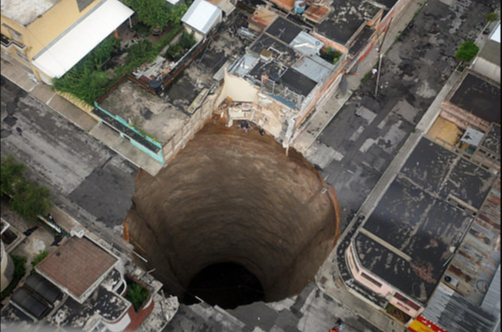About Survey Intelligence
First: about ground
The earth’s surface is a dynamic system. It provides a solid foundation but is nonetheless in constant motion - although very slowly and barely perceptible at most times. On this foundation we build our houses, our roads, our dikes, and we use it as a storage room for renewable energy.
But the ground moves
Ground movement in itself is not necessarily problematic, but if some areas move faster than others, or in opposite directions, this causes stress. The impact of this stress can be catastrophic: think about collapsing bridges, leakages of toxic gasses or earthquakes.
Buildings, roads, bridges, dikes, pipelines: the impact of ground deformation on civil infrastructure is substantial and associated costs are rising. Research institute Deltares estimates that the total bill worldwide mounts up to many billions of dollars annually.[1]
The climate factor
Problems caused by ground movement are increasing due to climate change on the one hand and the growth of the world's population and economic activities on the other hand.
In the Netherlands, we experience more often prolonged periods of dry weather with high average temperatures and low average rainfall. As a result, the moisture content of clay and peat soil is reduced and the soil shrinks, causing a downward movement (subsidence). The Netherlands Environmental Assessment Agency estimates the social costs of soil subsidence up to 2050 at €22 billion for the Netherlands.[2] |
The impact on your business
If your company wants to use the ground’s potential in a safe and effective way, it’s crucial that you understand both how the earth’s surface is developing ánd how it is reacting to your interference.
This means:
- You have to carry out inspections more frequently to check the status of your infrastructure
- Increased cost (more inspections raise the costs on the one hand and more maintenance needs to be carried out on the other hand to prevent structural damage and dangerous situations)
- You have more work with limited resources: you need to make decisions on how to allocate your budget and the number of staff available for maintenance
So, how can we help?
This is where we come in. By collecting, analyzing and interpreting big data, we are able to tell you how and when the ground is moving in order to predict when and where it will move again. We can identify and understand the stress that is caused by ground movement. This enables us to forecast future events and allows your company to make timely decisions on the choice between different actions to minimise or remediate that impact.
How do we do that?
At Survey Intelligence, we do believe that whatever the question, the answer is always in the data just waiting to be revealed. We start by gathering facts and not to discard any available data in order to increase the chances of understanding. In order to so, we use a wide array of data including seismic, gravimetry, GPS but also satellite data and we re-organising it in a way that is easy to understand.
The answer is always in the data, just waiting to be revealed - and data we have, plenty of it!
This is what we do:
- Learn and explore different areas and knowledge, borrow technics and science
- Clever data selection, clever processing, clever visualisation all in one package
- Reveal information, make visible what was invisible while keeping the process simple, intuitive and easy to use
Want to know more about our obession with big data?
Our missionWe have more than 25 years experience in the modelling and monitoring of the surface and subsurface. We have the knowledge and expertise to understand and identify the processes that trigger various ground deformations. With our ground monitoring services we do not only tell you how the ground is moving, but also why and what can be done. We identify exceptional events before they become critical. Our mission? To increase safety and minimise risks. |
[1] www.deltares.nl/en/topdossiers/subsidence/
[2] Planbureau voor de Leefopmgeving “Dalende bodems, stijgende kosten” (2016)


